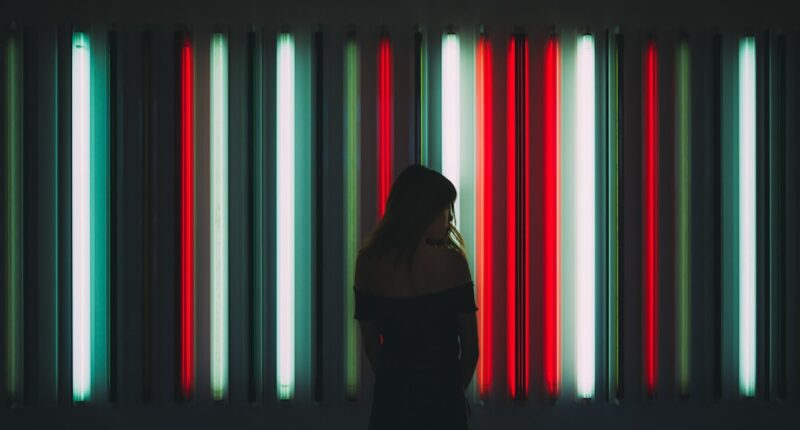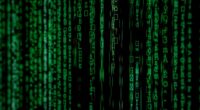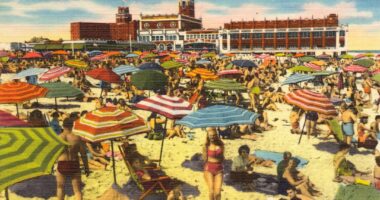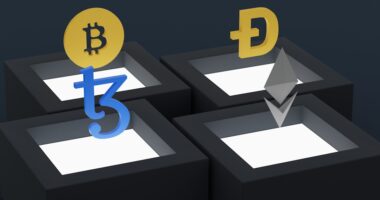Non-fungible tokens (NFTs) have significantly impacted the art world, transforming the creation, sale, and collection of digital art. NFTs are unique digital assets stored on a blockchain, ensuring their individuality and non-interchangeability. This technology has created new avenues for artists to monetize digital creations and reach a global audience of collectors and enthusiasts.
NFT art encompasses various forms, including digital paintings, animations, and virtual reality experiences. The appeal of NFT art stems from its scarcity, provenance, and authenticity, as each artwork is linked to a specific blockchain token, providing a transparent and unalterable ownership record. The emergence of NFT art has sparked creativity and innovation in the art world, attracting established artists, digital creators, and traditional artists exploring new mediums.
However, the environmental impact of blockchain technology, particularly the energy consumption of NFT transactions, has raised sustainability concerns. Despite controversies, the digital art market continues to expand, with new platforms and marketplaces developing to support artists in their NFT endeavors. This article will examine the process of creating, minting, and selling NFT art, as well as current opportunities and trends in the NFT art landscape.
Step 1: Understanding NFTs and Blockchain Technology
What is Blockchain Technology?
Before diving into the world of NFT art, it’s essential to understand the underlying technology that powers it. NFTs are built on blockchain technology, which is a decentralized and distributed ledger that records transactions across a network of computers.
The Uniqueness of NFTs
Unlike cryptocurrencies such as Bitcoin or Ethereum, which are fungible and interchangeable, NFTs are non-fungible, meaning each token is unique and cannot be replicated or replaced. This uniqueness is what gives NFT art its value and appeal to collectors.
The Benefits of Blockchain Technology for NFT Art
Blockchain technology provides a secure and transparent way to verify ownership and provenance of digital assets, making it an ideal platform for creating and trading NFT art. By leveraging blockchain technology, artists can ensure the authenticity and scarcity of their digital creations, as well as receive royalties from secondary sales.
The Environmental Impact of Blockchain Technology
However, it’s important to note that the environmental impact of blockchain technology has been a point of contention, as the energy consumption of NFT transactions has raised concerns about sustainability. As the NFT space continues to evolve, there is a growing focus on developing more eco-friendly solutions for creating and trading NFT art.
Step 2: Creating and Uploading Your Artwork to an NFT Marketplace

Once you have a solid understanding of NFTs and blockchain technology, the next step is to create and upload your artwork to an NFT marketplace. There are several platforms that cater to NFT art, each with its own set of requirements and guidelines for artists. When creating digital art for NFTs, it’s important to consider the file format, resolution, and overall presentation of your artwork.
High-quality images or files are essential for showcasing your art in the best possible light and attracting potential buyers. When choosing an NFT marketplace to upload your artwork, it’s crucial to research and compare the different platforms to find the best fit for your art style and target audience. Some popular NFT marketplaces for art include OpenSea, Rarible, Foundation, and SuperRare, each offering unique features and community engagement opportunities for artists.
Before uploading your artwork, be sure to familiarize yourself with the platform’s terms of service, fees, and minting process to ensure a smooth and successful listing.
Step 3: Minting Your NFT and Setting Royalties
| Metrics | Data |
|---|---|
| Total NFTs minted | 100 |
| Creator’s royalty percentage | 10% |
| Number of sales | 50 |
| Total royalties earned | 500 |
Minting your NFT is the process of creating a unique token on the blockchain that represents your artwork. This process typically involves connecting your digital wallet to the NFT marketplace and following the platform’s minting instructions to generate your NFT. When minting your NFT, you will have the opportunity to set royalties, which are a percentage of the resale value that you will receive whenever your artwork is sold in the secondary market.
Setting royalties is an important aspect of monetizing your NFT art and ensuring that you continue to benefit from your creations as they change hands over time. In addition to setting royalties, you may also have the option to add unlockable content or special features to your NFT, such as limited edition prints, behind-the-scenes footage, or exclusive experiences for the buyer. These added incentives can enhance the value of your NFT art and attract collectors who are looking for unique and immersive experiences.
As the NFT market continues to evolve, artists have the opportunity to experiment with different strategies for minting their NFTs and engaging with their audience in new and exciting ways.
Step 4: Promoting and Selling Your NFT Art
Once your NFT art is minted and listed on an NFT marketplace, the next step is to promote and sell your artwork to potential buyers. Building a strong online presence through social media, artist communities, and digital art forums can help you reach a wider audience and connect with collectors who are interested in your work. Sharing behind-the-scenes insights into your creative process, hosting live events or virtual exhibitions, and collaborating with other artists can also help generate buzz around your NFT art and drive sales.
Engaging with your audience and building a community around your NFT art can create a loyal fan base that supports your artistic journey and collects your work. By fostering meaningful connections with collectors and supporters, you can create a sustainable income stream from selling your NFT art and participating in the growing ecosystem of digital creators. It’s important to stay informed about market trends, collector preferences, and emerging technologies in the NFT space to adapt your promotional strategies and stay ahead of the curve.
NFT Jobs: Opportunities for Artists and Creators in the NFT Space

New Career Paths in the NFT Space
The growing demand for skills such as 3D modeling, animation, sound design, and interactive media production in the NFT space offers job opportunities for artists with diverse skill sets. Moreover, NFT marketplaces and platforms are seeking talented individuals to join their teams as community managers, curators, marketing specialists, and technical experts to support their growth and engage with their artist community.
Emerging Job Requirements in the NFT Ecosystem
As the NFT ecosystem continues to expand, there will be an increasing demand for professionals who understand blockchain technology, digital rights management, intellectual property law, and ethical considerations in the creation and distribution of digital assets.
Positioning for Success in the NFT Job Market
By staying informed about these opportunities and honing their skills in digital art production and marketing, artists can position themselves for success in the evolving landscape of NFT jobs.
NFT News: Latest Developments and Trends in the NFT Art World
Staying up-to-date with the latest developments and trends in the NFT art world is essential for artists looking to navigate this rapidly evolving space. From new platform launches and collaborations with brands to regulatory changes and market fluctuations, there are many factors that can impact an artist’s success in the NFT market. Following industry news sources, attending virtual events and conferences, and networking with other artists can provide valuable insights into emerging trends and best practices for creating and selling NFT art.
In addition to industry news, artists should also pay attention to collector preferences, market demand for specific art styles or themes, and emerging technologies that could influence the future of NFT art. By staying informed about these trends and adapting their creative strategies accordingly, artists can position themselves for success in the competitive landscape of NFT art. As the NFT space continues to evolve, there will be new opportunities for artists to innovate, collaborate, and thrive in this exciting new frontier of digital creativity.
In conclusion, the rise of NFT art has transformed the way artists create, sell, and collect digital art by leveraging blockchain technology to provide transparency, authenticity, and scarcity. By understanding the fundamentals of NFTs and blockchain technology, artists can navigate the process of creating, minting, promoting, and selling their artwork on NFT marketplaces. The opportunities for artists in the NFT space extend beyond creating and selling art to include job opportunities in virtual real estate, gaming, virtual reality experiences, digital fashion, and roles within NFT platforms.
Staying informed about industry news and trends is crucial for artists looking to succeed in this rapidly evolving landscape of digital creativity.
If you’re interested in learning more about creating NFT art for free, you should check out this article on NFT-Jobs. This website offers valuable resources and information on how to get started in the world of NFT art, including tips on creating and selling your own digital artwork. Whether you’re a seasoned artist or just starting out, NFT-Jobs has the tools and guidance you need to succeed in the NFT marketplace.
FAQs
What is NFT art?
NFT art refers to digital artwork that is tokenized as a non-fungible token (NFT) on a blockchain. This means that each piece of NFT art is unique and cannot be replicated or exchanged on a one-to-one basis like cryptocurrencies.
How can I create NFT art for free?
To create NFT art for free, you can use various online platforms that offer free NFT creation tools. These platforms typically allow artists to upload their digital artwork, mint it as an NFT, and then list it for sale on a marketplace without any upfront costs.
What are some popular platforms for creating NFT art for free?
Some popular platforms for creating NFT art for free include Rarible, OpenSea, and Mintable. These platforms offer user-friendly interfaces and tools for artists to mint their digital artwork as NFTs without incurring any fees.
What are the steps to create NFT art for free?
The steps to create NFT art for free typically involve signing up for an account on a platform that offers free NFT creation tools, uploading your digital artwork, minting it as an NFT, and then listing it for sale on the platform’s marketplace.
Are there any costs involved in creating NFT art for free?
While the actual process of creating NFT art for free does not incur any upfront costs on certain platforms, there may be gas fees associated with minting and listing the NFT on the blockchain. Gas fees are transaction fees paid to miners on the blockchain network and can vary depending on network congestion and other factors.





